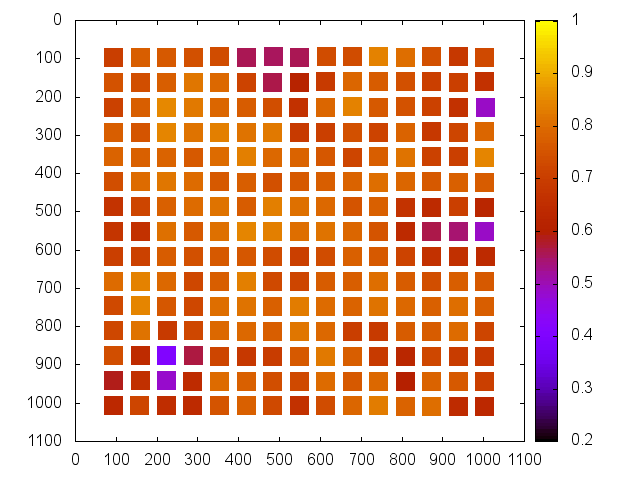Batch Normalized Cross-Correlation
By TC
Description
The purpose of the batch NCC is to be able to see what areas of the topography are strongest and weakest. In general, this will be performed on the the high resolution maplets that make up the topography in question, but this process will work for any given list of maplets. Following this guide will run norm_xcorr.py for each maplet specified in your input list, as well as provide several useful statistics and plots for analysis.
Setup
There are a few prerequisites to get in order before processing can begin. First of which is gathering files. Links to text versions of all of the script files I use are provided, but feel free to adapt them to your needs, or write new ones!
Step 1: Create a directory called COROUT in your working directory. (Can be called whatever you'd like but this will require updating the scripts)
mkdir COROUT
Step 2: Place the search image inside of COROUT. For our purposes this is generally an image rendered from the truth model using Showmap
cp /whatever/path/truth.pgm COROUT/
Step 3: Add the truth .MAP file to your MAPFILES directory, and update BIGLIST.TXT. Generally speaking it is bad form to have a truth map in your MAPFILES directory, but as long as this is for post-processing analysis it should be fine. It may be best to create a symbolic link.
ln -s /path/to/TRUTH.MAP MAPFILES/TRUTH.MAP vi BIGLIST.TXT (insert truth map name in BIGLIST.TXT)
Step 4: Create the .pgm image files of each maplet using Showmap. This can be easily done in bash with the script below which takes a command line argument of your list of maplets. If you chose to not stick with the COROUT naming convention, update the $cp variable as well.
file=$1
cp=COROUT
list=`cat $file`
for i in $list
do
showmap <<< $i
mv $i.pgm $cp/
done
Batch NCC
Step 1: Again using a simple bash script, iteratively run norm_xcorr.py using on each maplet. Again an example is given below where paths should be updated as necessary. The command line argument should be your list of maplets. The default output file is locations.txt
file=$1
cp=COROUT
list=`cat $file`
rm -f locations.txt
for i in $list
do
echo "m" > tmpf
echo $i >> tmpf
echo "50 50" >> tmpf
read x y <<< $(/path/to/newFind < tmpf | awk '/T15-1K/{print $3, $4}')
python /path/to/norm_xcorr.py -o $cp/$i.png $cp/$i.pgm $cp/T15-1K.pgm > $cp/$i.txt
read tx ty <<< $(awk '/match/{print $8, $9}' $cp/$i.txt)
dx=`echo "$tx-$x" | bc`
dy=`echo "$ty-$y" | bc`
cor=`awk '/Max/{print $4}' $cp/$i.txt`
printf "$i $x $y $dx $dy $cor\n" >> locations.txt
done
rm tmpfThis script also assumes the use of a FORTRAN program called newFind which is a standalone version of the lithos "find" option that prints to higher precision. This can easily be replaced with the lithos program instead, but expect this to approximately double processing time.
**N.B. If you are changing from newFind to lithos you need to change the beginning of the for loop to call the find routine in lithos. The new script should start like this:
.
.
.
for i in $list
do
echo "f" > tmpf
echo "m" >> tmpf
echo $i >> tmpf
echo "50 50" >> tmpf
.
.
.Step 2: Use transStats.py on the output file from the above script (locations.txt) to get some statistics from the batch NCC. For a more detailed description of this python script, see Translation Statistics.
python transStats.py locations.txt > transOut.txt
Visualizing Output
The output from the batch correlation script (locations.txt) can be plotted very easily in Gnuplot.
gnuplot set term x11 unset key set yrange [*:*] reverse set cbrange [0.2:1] plot 'locations.txt' u 2:3:4:5 w vectors plot 'locations.txt' u 2:3:6 pal pt 5 ps 3


